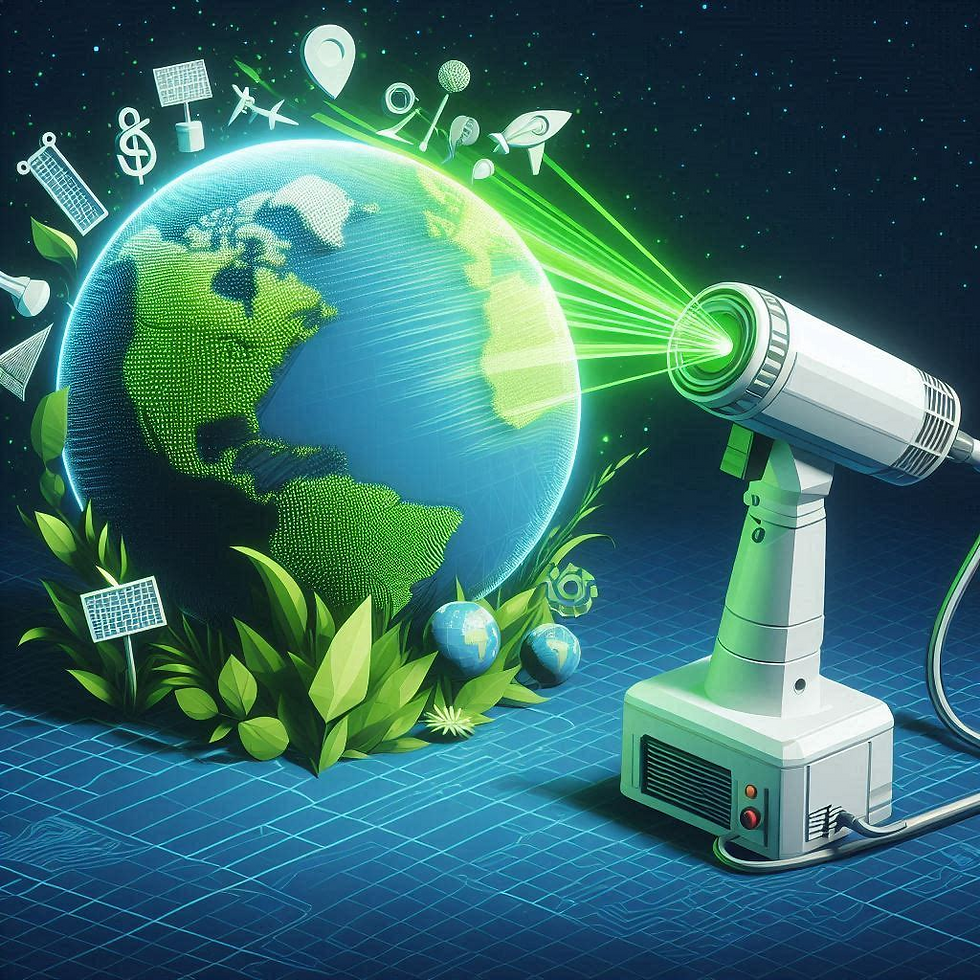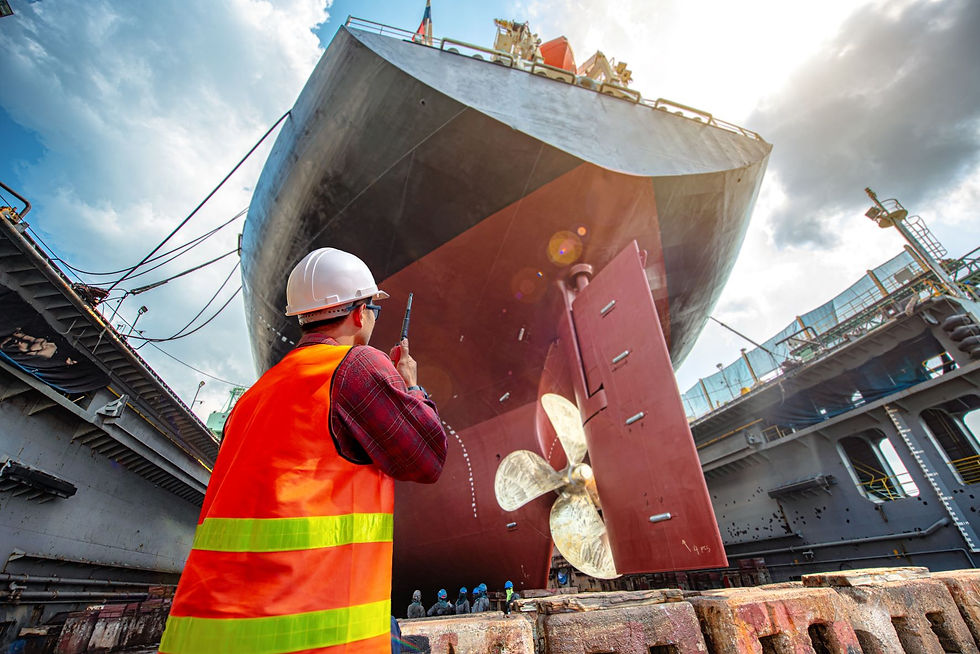Laser Cleaning in Heritage Conservation: Preserving Australia's Past with Cutting-Edge Tech
- mainals
- Jul 18, 2024
- 4 min read
Australia's rich cultural heritage, spanning tens of thousands of years from Indigenous history to colonial architecture, is a treasure trove that demands careful preservation. In recent years, a revolutionary technique has emerged in the field of heritage conservation: laser cleaning. This cutting-edge technology is transforming the way Australia preserves its historical artefacts and structures, offering a level of precision and care previously unattainable through traditional methods.
Understanding Laser Cleaning
Laser cleaning is a non-contact method that uses focused laser light to remove contaminants, coatings, and corrosion from surfaces without damaging the underlying material. The process works by directing short pulses of laser energy at the surface, which vaporises the unwanted material while leaving the substrate intact. Key advantages of laser cleaning in heritage conservation include:
Precision: Allows for targeted cleaning of specific areas without affecting surrounding materials.
Non-abrasive: Minimises the risk of damage to delicate surfaces.
Chemical-free: Eliminates the need for potentially harmful cleaning agents.
Controllable: The intensity and duration of the laser can be finely tuned for different materials and conditions.
Laser Cleaning Applications in Australian Heritage Conservation
Aboriginal Rock Art Preservation
Australia's Aboriginal rock art, some of the oldest in the world, faces threats from natural weathering and human activity. Laser cleaning is proving to be a game-changer in preserving these irreplaceable cultural treasures.
Case Study: In the Kimberley region of Western Australia, conservators have successfully used laser cleaning to remove mineral accretions from rock art panels, revealing vibrant ochre paintings hidden for centuries.
Colonial Architecture Restoration
Many of Australia's historic buildings from the colonial era suffer from pollution, biological growth, and weathering. Laser cleaning is helping to restore these structures to their former glory.
Example: The Sydney Harbour Bridge, an iconic structure completed in 1932, has undergone laser cleaning trials to remove decades of accumulated pollutants and corrosion, revealing the original granite surfaces without causing any damage to the stone.
Maritime Artefact Conservation
Australia's maritime history is rich with shipwrecks and recovered artefacts. Laser cleaning is proving invaluable in conserving these often fragile items.
Success Story: The Western Australian Museum has used laser cleaning to restore metal artefacts from the wreck of the Batavia, a 17th-century Dutch East India Company ship. The technique allowed for the removal of centuries of marine concretion while preserving the underlying metal.
Manuscript and Document Preservation
Laser cleaning is not limited to large structures; it's also being used to preserve delicate paper documents and manuscripts.
Innovation: The National Library of Australia has adopted laser cleaning techniques to remove mould and stains from rare books and manuscripts, including some of the earliest European maps of Australia.
Public Art Restoration
Modern and contemporary public art pieces, often exposed to harsh urban environments, benefit from the gentle yet effective nature of laser cleaning.
Urban Application: In Melbourne, laser cleaning has been used to restore outdoor sculptures, removing graffiti and atmospheric pollutants without altering the original patina of the artworks.
Challenges and Considerations
While laser cleaning offers numerous benefits, its application in heritage conservation is not without challenges:. These include:
Expertise Required
Operating laser cleaning equipment requires specialised training to ensure effective and safe use.
Solution: Australian conservation institutions are investing in training programs and partnering with international experts to build local expertise.
Initial Cost
The equipment for laser cleaning can be expensive, potentially limiting its accessibility for smaller conservation projects.
Funding Initiative: The Australian Government's Heritage Grants program has begun including laser cleaning equipment in its funding considerations for significant conservation projects.
Material Sensitivity
Some materials may react differently to laser cleaning, requiring careful assessment before application.
Research Focus: Australian universities, including the University of Melbourne and the University of Canberra, are conducting extensive research on the effects of laser cleaning on various heritage materials.
Ethical Considerations
There are ongoing discussions about the ethics of using modern technology on ancient artefacts, particularly concerning Indigenous cultural heritage.
Collaborative Approach: Australian conservators are working closely with Indigenous communities to ensure that laser cleaning techniques are used respectfully and appropriately on culturally significant items.
Future Directions and Innovations
As laser cleaning technology continues to evolve, several exciting developments are on the horizon for heritage conservation in Australia:
Portable Laser Cleaning Systems: Development of more compact and portable laser cleaning devices will allow for on-site treatment of immovable heritage objects and structures.
AI-assisted Laser Cleaning: Integration of artificial intelligence to optimise laser parameters in real-time, ensuring even more precise and safe cleaning processes.
Underwater Laser Cleaning: Advancements in underwater laser technology could revolutionise the conservation of submerged heritage sites, such as shipwrecks in the Great Barrier Reef.
Combination with 3D Scanning: Pairing laser cleaning with 3D scanning technology for comprehensive documentation and monitoring of conservation treatments.
Education and Public Engagement: Development of educational programs and public demonstrations to increase awareness and appreciation of heritage conservation techniques.
Conclusion
The adoption of laser cleaning in Australia's heritage conservation efforts represents a significant leap forward in preserving the nation's cultural treasures. By offering a level of precision, control, and gentleness unmatched by traditional methods, laser cleaning is ensuring that Australia's diverse heritage – from ancient rock art to colonial architecture – can be preserved for future generations to study and appreciate.
As the technology continues to evolve and become more accessible, we can expect to see its application expand across a wider range of conservation projects throughout Australia. The integration of laser cleaning into heritage conservation not only demonstrates Australia's commitment to preserving its past but also showcases its willingness to embrace cutting-edge technology in doing so.
The marriage of Australia's rich cultural heritage with innovative laser technology is more than just a conservation method; it's a testament to the country's ability to bridge the gap between its ancient past and its technologically advanced present. As we look to the future, laser cleaning stands as a shining example of how modern science can be harnessed to protect and reveal the stories of our shared history, ensuring that Australia's cultural legacy remains vibrant and accessible for generations to come.




Comments